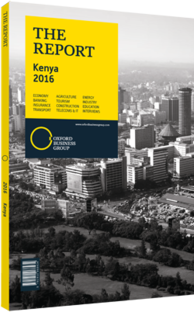Jambu Palaniappan, Regional General Manager for Middle East and Africa, Uber: Interview

Interview: Jambu Palaniappan
How has Kenya’s high smartphone penetration affected usage and performance of mobile apps?
JAMBU PALANIAPPAN: Within the region, Kenya has been at the leading edge of technology adoption and use for many years, and it serves as a template for other African countries. The high increasingly penetration rate for smartphones, both basic and high-end, has opened up a huge potential market to app developers and innovators, which is why we recently have seen so much development in this space. Mobile money and banking are the most well-known segments to have taken advantage of this, but we are now seeing a whole new generation of apps and start-ups looking to cash in on the opportunities in the Kenyan market.
This includes the transport sector, where we see a lot of potential for innovation, both in Kenya and globally. Nairobi is especially well poised to see development in transport because it is large, spread-out, with significant traffic but unreliable public transport options. But transport is just one sector that presents these types of opportunities; there are countless others where the case is the same.
Widespread use of smartphones has also deeply influenced the demographics of who uses apps in these markets. The population that uses apps regularly is much broader and wider than many would imagine. Of course you have your business travellers, but you also have students, home workers, older people – really anyone who comes to mind. For developers to have access to such a wide and diverse market of smartphone users is a clear strength.
What tactics can companies use in markets with low credit card penetration?
PALANIAPPAN: Kenya is an interesting case study given the resilience of cash, as well as the strength of mobile money in its economy. Credit cards are strong in other markets, but not in Kenya, so using a purely credit card model has excluded a sizeable portion of potential users. For this reason we launched a cash payment option in Nairobi. Previously we only had this in Hyderabad, India. We hope this will open Uber to a whole new population of users. This move is all about adapting to the realities of a new market, and we are constantly looking for ways to innovate to stay relevant in the markets where we operate.
How has the regulatory framework affected so-called disruptive activities?
PALANIAPPAN: Across Africa, private sector innovation often leads the way, and is frequently ahead of regulations and government decisions. This holds true for most sectors, even outside the IT and start-up space. Yes, regulations on the continent are sometimes outdated, but compared to other, more controlled markets, regulators in Africa are often more willing to let companies experiment in spaces that are not yet tightly governed. In Uber’s case, regulators have been very welcoming, because, we think, they see the potential of what apps can do to improve the quality of life across the continent.
What are the existing options for financing app development and creation of local content in Kenya?
PALANIAPPAN: Private equity and venture capital have a central role to play in developing the apps and innovations that are coming out of the Kenyan market, as we have seen in many other fast-growing emerging economies. Kenya is especially well positioned for these types of investments given the penetration rates of smartphones and mobile payment options. These provide tools and platforms that are not necessarily available in other countries.
Going forward, however, such firms must be sure to focus on local content. For any business to work in a market like Nairobi, it must revolve around local populations – local talent, local capital and local usage. This is the only way to stay relevant to the local users.
You have reached the limit of premium articles you can view for free.
Choose from the options below to purchase print or digital editions of our Reports. You can also purchase a website subscription giving you unlimited access to all of our Reports online for 12 months.
If you have already purchased this Report or have a website subscription, please login to continue.

